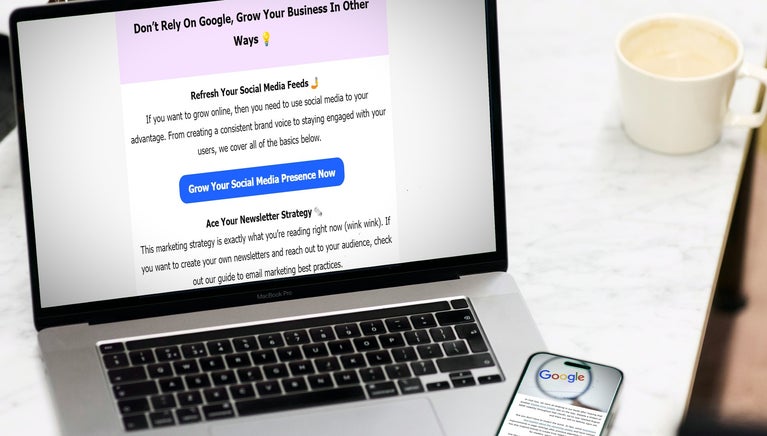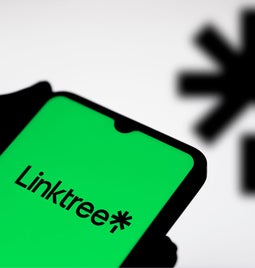Should Your Business Start a Substack Account in 2025? Find Out
We may receive a commission from our partners if you click on a link and purchase a product or service on their website. Learn more

As part of your content marketing strategy, you might have plans to post high-quality content across multiple touchpoints, like social media or your business blog, and increase your brand’s reach. But should you make Substack a part of your strategy too?
The publishing platform could be an effective marketing tool for your business, since it lets you easily create and share subscription-based content with your subscribers. Though Substack was originally designed for newsletters, it has evolved to support other forms of content like podcasts, videos, and discussion threads.
Has this piqued your interest? Keep reading as I take you through Substack’s key features and help you decide whether creating an account is the right move for your business or not.
How Does Substack Work?
Substack is best described as a combination of a newsletter and a blog.
When you first create your account, you’ll have your own Substack page with a unique URL. This website comes with blog-style features, like a home page where you can showcase your latest newsletter content and a post archive. Your readers will be able to access your content from here.

However, your subscribers will also have access to your content through their inboxes. Whenever you publish a new newsletter post, Substack will send this content directly to them.

Substack itself is free to use. You don’t need to pay to create an account and start distributing your content. Money will only be taken from your account if you’re selling subscriptions to users, with Substack taking a 10% cut from each paid subscription. Since payments are processed through Stripe, there’s an additional 2.9% + $0.30 payment fee, too.
What Are Substack’s Key Features?
To help you better understand Substack and what you can expect from the platform, let me take you through its key features and their benefits:
- Monetization through subscriptions – If you’d like to monetize your creativity online, you can set up paid subscriptions. Readers can pay a weekly or annual fee to access exclusive newsletter content.
- Community engagement features – By enabling community features, readers can like or comment on your Substack posts. You can also set up discussion threads that let you host conversations with your subscribers. This tool is useful if you want to build a strong community behind your brand.
- Grow your email lists – You can upload pre-existing email lists to Substack or build your subscribers from scratch by posting regular, high-quality content.
- Recommend other Substacks – Want to connect with other creators? On Substack, you can recommend other newsletters. This is a clever way to grow your business online, since it’ll get your business seen by wider audiences that might also be interested in your content.
- Share other media types – You can enhance your Substack newsletters by embedding video or audio content in your posts. Additionally, you can distribute any branded podcast episodes via Substack.
- Built-in analytics – Substack has its own analytics, allowing you to check your subscriber growth, gross annualized revenue, and post performance. This is useful if you want to keep a close eye on audience behavior and see what content is working.

How Can I Tell if Substack Is Right for My Business?
Now that you have a better understanding of Substack and its features, it’s time to assess whether it’s the right platform for your business and its goals. Ask yourself these key questions first:
- What newsletter features do I need? Though Substack comes with analytics, it’s lacking some advanced email marketing features. You can’t segment your audience or set up complex automations. If you’re already using Mailchimp, MailerLite, or another popular email marketing platform, the transition to Substack may not be worth it.
- Are you trying to build a community? If one of your business’ main goals is to foster a sense of community, Substack is an appropriate platform to use. It’s an easy way to encourage audience engagement through comments and discussion threads.
- Do you need a platform that’s easy to use? I find Substack really easy to use and there was minimal fuss when setting up. So, if you’re looking for an intuitive platform without a sharp learning curve, Substack is a strong fit for your business.
- What is your business budget? Because Substack is free to use, it’s ideal for smaller businesses with a limited budget. Just be aware that Substack will take a small chunk out of your total revenue if you’re monetizing your newsletters.
- Do you want to sell your content? The only way to monetize your Substack is through paid subscriptions. That means you can’t sell one-off online courses or physical products. For that, your business will need an ecommerce website builder or online marketplace instead.

Posting on Substack: Final Thoughts
If you’re looking for an easy, cost-efficient way to share your content online and grow your business, Substack is one of the best options out there. Creating an account is free, and it gives you the features you need to develop a strong sense of community online.
However, before you commit to Substack, make sure that you’ve weighed up the platform’s pros and cons first. You need to make sure that it’s the right fit for your business and can help you achieve your goals.





Leave a comment